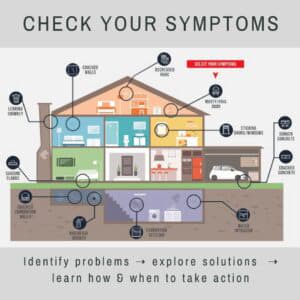Spring Cleaning Tips for Your Basement
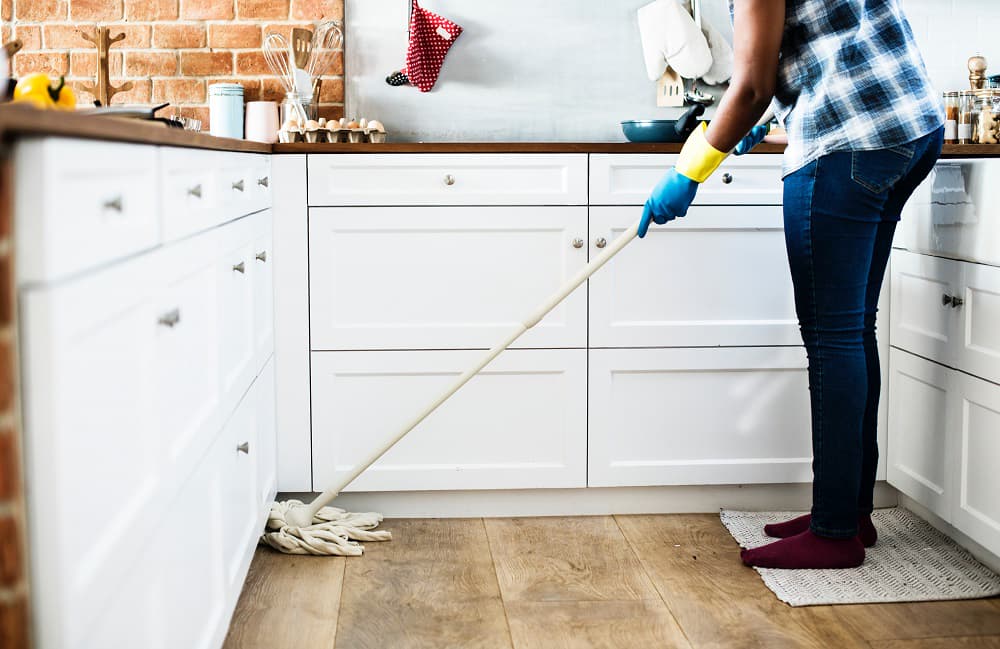
Originally posted 3/29/19, updated 3/7/22
If you’ve ever read any articles about spring cleaning, you’re probably familiar with the stereotypical suggestions: organize your books by color! Throw out anything that doesn’t bring you joy! Make your own cleaning solutions out of household items!
This guide is different. We don’t want to tell you how to store old holiday decorations, or to scrub your basement walls with vinegar (yes, it’s a natural disinfectant, but who wants their home to smell like that!). We want to help you detect any developing problems with your unfinished basement.
Acculevel is a family-owned and operated business that specializes in basement waterproofing and foundation repair. Andy Beery founded the company in 1996, and in the 20+ years since, we’ve helped more than 35,000 homeowners repair, preserve, and protect their homes for the future.
By combining your traditional spring cleaning with some tasks from our DIY Home Inspection Checklist, we’re going to help you find signs of brewing trouble before they become major repair expenses.
Let’s Start At The Top: Evaluate the Ceiling
As you move through your basement, you should keep an eye on what’s above you. The flooring structure above you should consist of clean and dry lumber, from the floor joists to the subfloor.
If you see any abnormalities, you should get a ladder and take a closer look.
- Cracked or crooked boards are a problem for obvious reasons- these components are holding up your main floor!
- Discoloration can be a sign of mold, mildew, or other biological growth. Mold is bad for allergies, air quality, and an indication you have a moisture problem.
- Flaky or peeling on the surface of a board can be a sign of insect tunneling.
If you find conditions that concern you, mark the board with a piece of chalk or colored tape. This will help you easily find the sections again later. At the end of your cleaning spree, you’ll want to revisit any noted concerns to determine if you need a professional assessment.
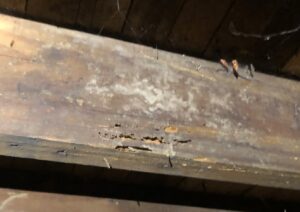
This photo was taken by an Acculevel project advisor during an in-home assessment. You can see the floor joists are decaying, and showing signs of mold (discoloration).
Side to Side: Give Your Basement Walls A Closer Look
There’s some overlap between warning signs on your basement walls and floor. In both instances, you need to look at every crack with a critical eye.
A few super-thin (our industry calls them hairline) cracks are to be expected. Here in the midwest, seasonal changes in weather can affect home foundations. Freezing and thawing causes concrete to expand and contract; these tiny cracks are a natural side effect. But there are other kinds of cracks that you need to be concerned about:
- If the cracks are wider than hairline, or if the width varies along the crack, this is a cause for concern.

This photo was taken by an Acculevel project advisor during a free in-home assessment. This crack is a hairline at one end, but widens as it moves up the wall.
- Are there any signs that water is seeping in through the crack? Is it discolored, or does it have a strange texture to it? When water leaks into your basement, then evaporates, it leaves behind mineral deposits. This is called efflorescence and it can vary in color, but it will have a grainy, salt-like feel to it.
- You can remove the efflorescence or water stains as part of your spring cleaning, but take pictures of it first. These photos will help a contractor evaluate the water damage and repair the cracks in the most efficient way possible. You may only need crack repair, or you may also need basement waterproofing.

This photo was also taken by an Acculeve project advisor. The discoloration on this concrete wall is efflorescence.
- If you find other types of cracks in your basement walls, you should contact a foundation repair company. Larger cracks represent serious damage, and this should be addressed promptly. This is especially true if the cracks are a long horizontal line, or a zig-zag pattern. And if that wall is bowing (leaning) inward? You need an evaluation immediately.
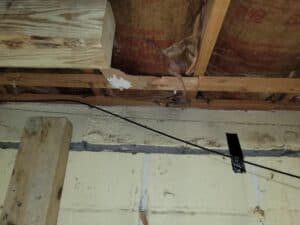
Another photo taken by an Acculevel project advisor: this cracked and bowing wall needs to be straightened and reinforced.
Get Down On The Floor
As we indicated earlier, the search parameters for the floor are similar to your walls: cracks and water intrusion are definitely on the list:
- You know how to recognize cracks in your floor, but you also have to be on guard for a sinking slab floor. As you sweep or mop, are you finding a low spot where everything drains towards one area? This could mean your slab floor is settling.
- Water can get into your basement through cracks, but it can also come in through the cove joint. This is a technical term for the place where the wall meets the floor.
- Water stains and efflorescence are still the warning signs to look for. Again, take pictures before you clean up these problematic stains. If you water getting into your basement through the floor, you will definitely need to install water drainage.
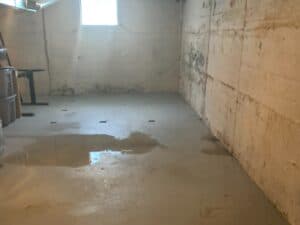
In this photo (taken by an Acculevel project advisor), water is seeping into the basement at the cove joint.
Do You Want More Information About Symptoms You’ve Found?
Throughout this article, we’ve provided links to related articles that go into greater detail about each topic. If you would like additional information, please use our free diagnostic tool that breaks down symptoms by common complaints:
Ready to Meet With A Foundation or Waterproofing Expert?
If you live within our service area, please give Acculevel a call or complete our online form. We will schedule an in-home appointment with one of our knowledgeable and experienced project advisors.
They will discuss the symptoms you’ve noticed, and what plans you might have for your basement (Storage? A home office? Mother-in-law suite?). Your project advisor will evaluate your entire home, to gain a clear understanding of any potential problems. Acculevel’s goal is to always provide you with a whole-home solution, a plan that addresses the symptoms and the underlying causes that threaten your house’s health.
As a team, you and your project advisor will determine the best way forward, to protect and preserve your home for years to come.

